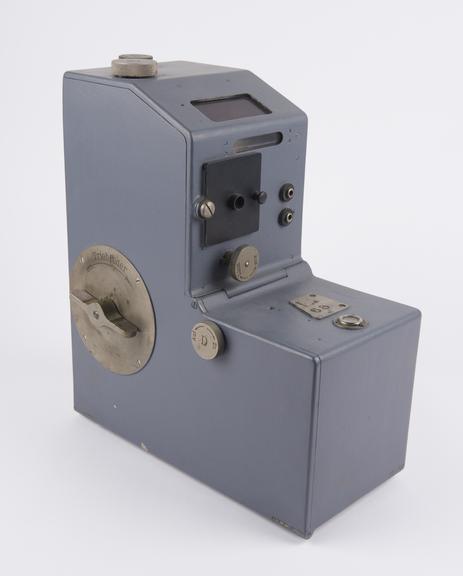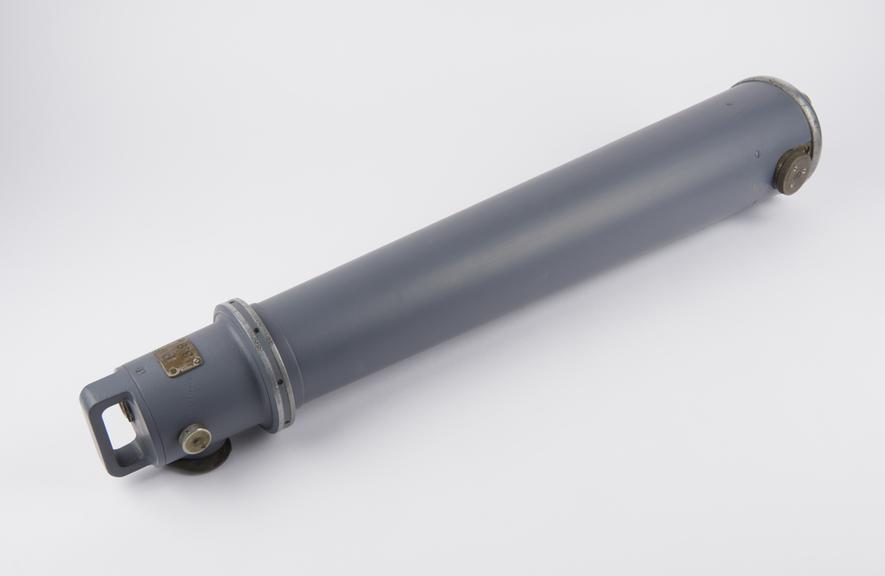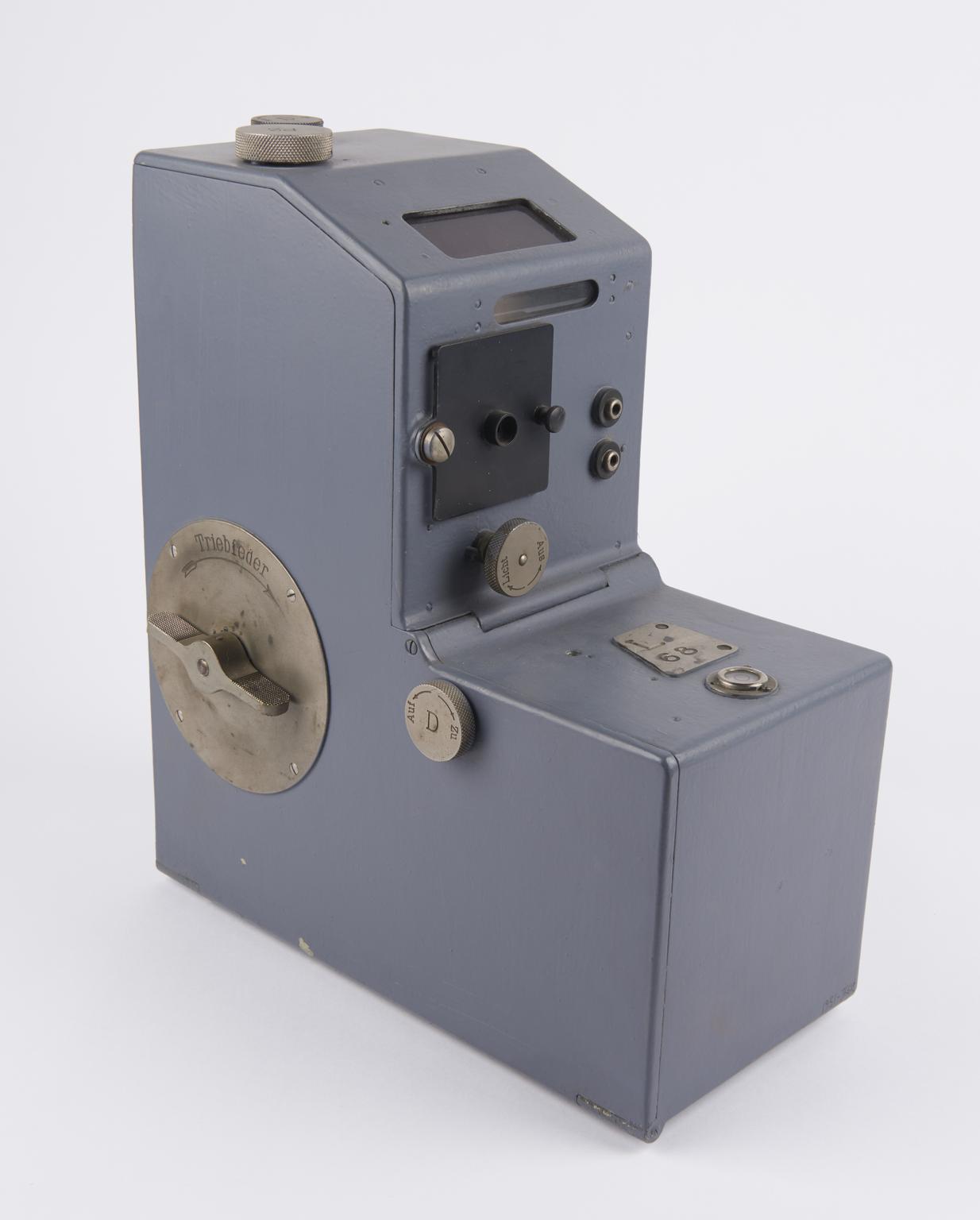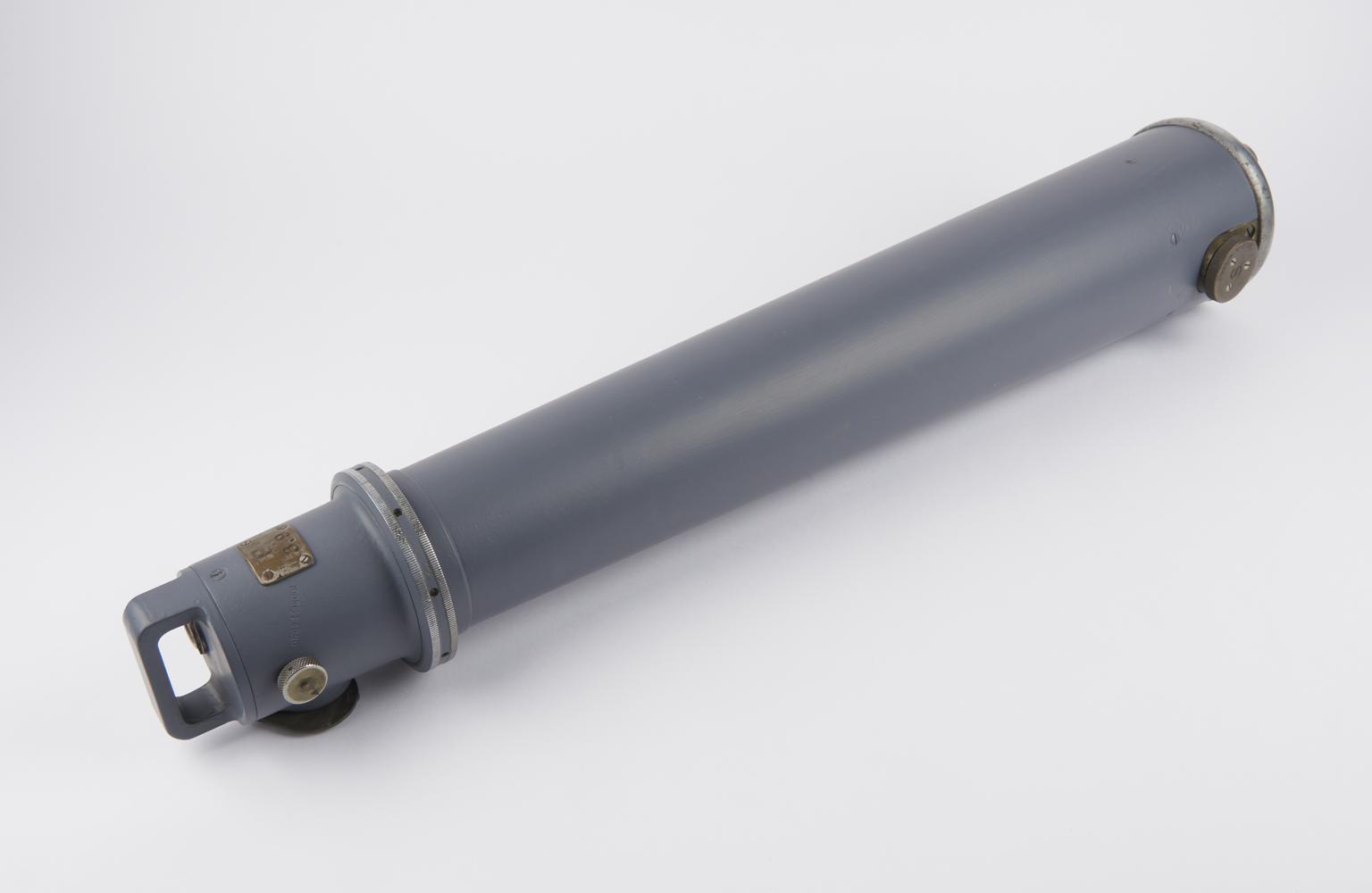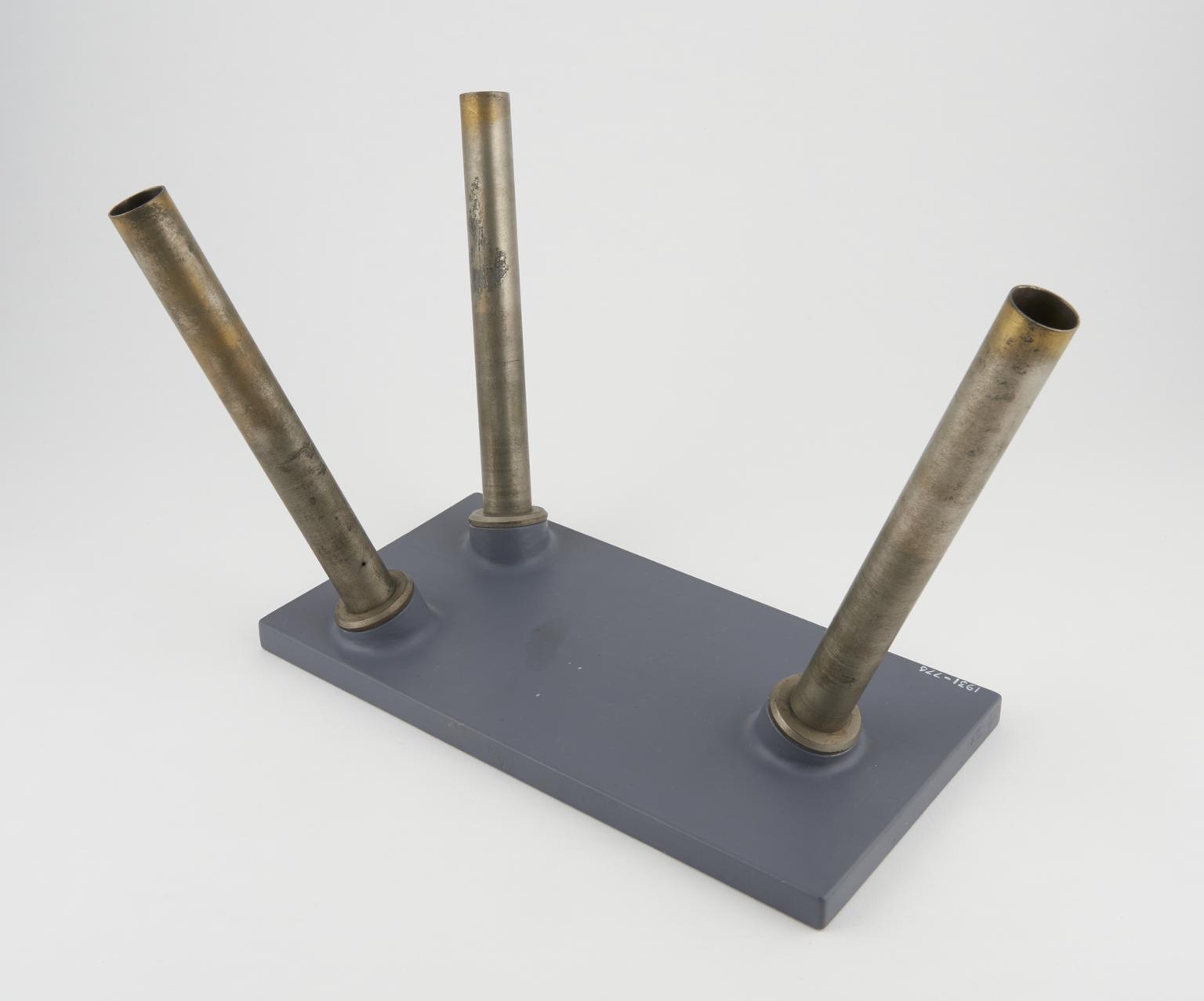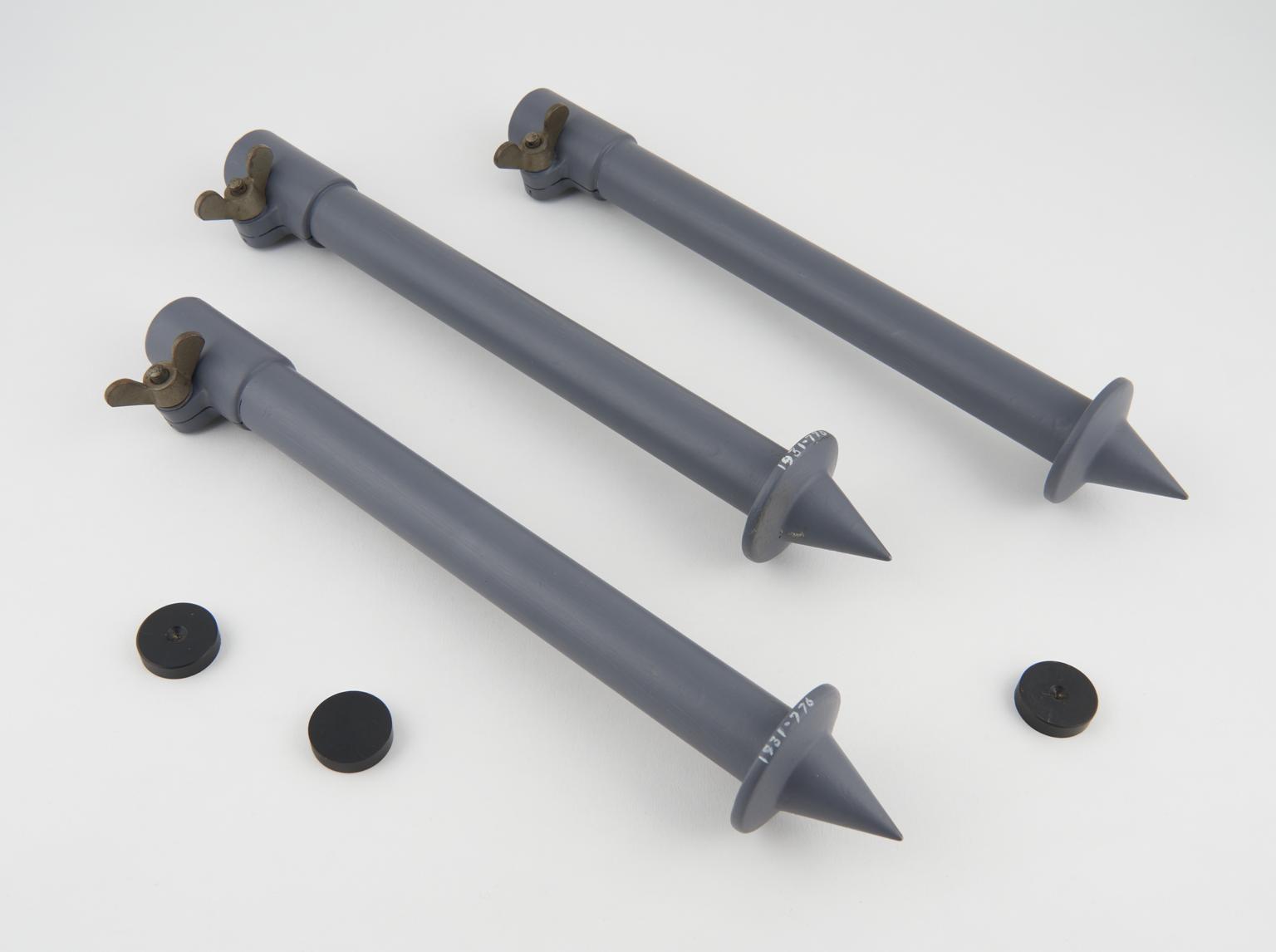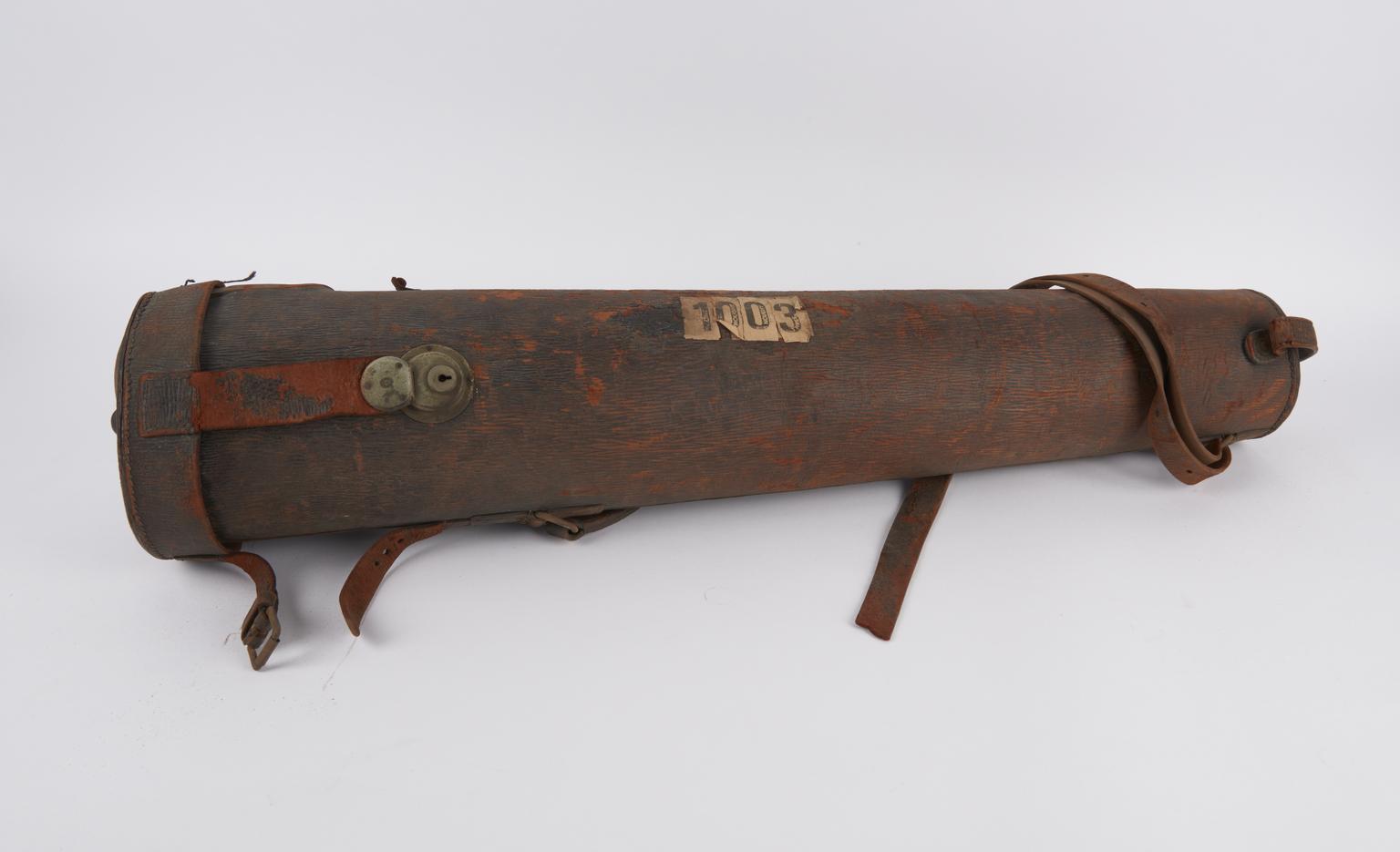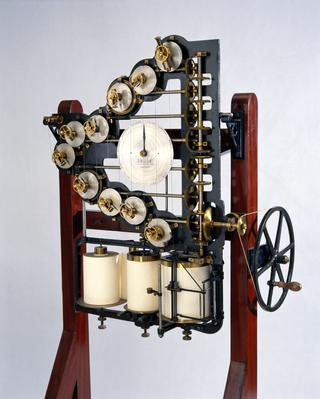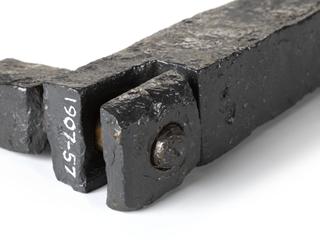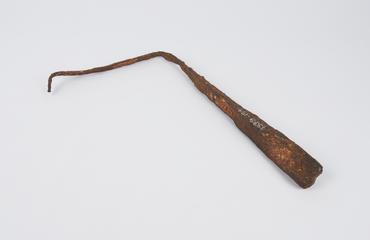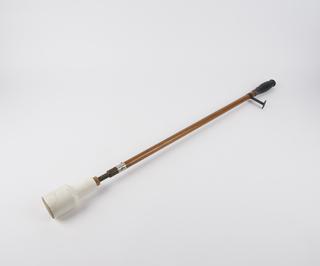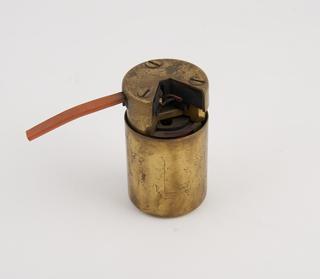Mintrop refraction field seismograph with recording apparatus, for geophysical prospecting
Mintrop refraction field seismograph, recording apparatus and stand for geophysical prospecting, designed by Ludger Mintrop and made by Seismos GmbH, Hannover, Germany, c.1921. This instrument type was the earliest practical field seismograph.
More
Geophysical prospecting methods apply principles of physics in order to locate underground mineral or oil deposits. Field seismographs rely on explosive charges, accurately timed, sending energy waves through subsurface layers to the receiving apparatus. Refraction seismology interprets the waves which are refracted and delayed by passage through different strata.
This instrument detects the vertical component of ground motion through a lead sphere carried on a leaf spring. The motion is initially magnified by lever action of the aluminium cone. The cone vertex rotates a spindle with attached mirror. A light-beam from the recorder box is reflected from the mirror and again magnified before the beam is recorded photographically on a moving chart together with a time-trace. The explosive charge was set off at a known distance and reached the instrument as an air-borne pressure wave giving the exact time of the start of each operation.
Ludger Mintrop was a German surveyor, mining engineer and geophysicist. After developing sound-ranging seismographs to locate artillery positions during the First World War, he applied similar techniques to seismic exploration of subsurface geological structures. He founded the company Seismos in 1921 after successful tests in Germany detecting salt domes – associated with deposits of oil.
- Measurements:
-
overall: 21.315kg
- Materials:
- aluminium alloy , steel (metal) , brass (copper, zinc alloy) , glass , rubber (unidentified) , paper (fibre product) and leather
- Object Number:
- 1931-766 Pt1
- type:
- seismograph





